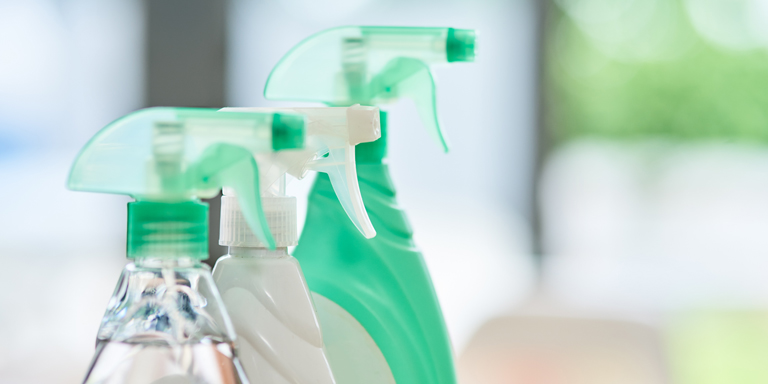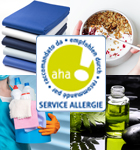Chemical substances
Every day we come into contact with chemical substances, such as cosmetics, cleaning agents and dyes. Some can cause an allergy or irritation.

Table of contents:
Chemical substances influence our lives - they are after all what we are made of. But different natural and synthetic substances can also have a negative effect on our health and result in irritation or allergy. These are often fragrances, preservatives, dyes, formaldehyde and volatile organic compounds.
Triggers
The substances that are the most common cause of undesirable reactions are:
- fragrances: from natural essences or manmade in cosmetics, cleaning agents and air fresheners
- preservatives: in cosmetics, cleaning agents, waterbased dyes and adhesives (e.g. methylchloroisothiazolinone, methylisothiazolinone)
- dyes: in clothing, curtains, bed linen, sofa covers (e.g. pphenylenediamine)
- formaldehyde: in adhesives, disinfectants and preservatives
- volatile organic compounds (VOC): in dyes, paints, adhesives and sealants
Symptoms
The numerous chemical substances can trigger different types of allergic reaction. Typical immediate reactions are streaming, itchy eyes and asthma symptoms, Delayed reactions tend to manifest on the skin, as erythema, eczema and itching. In rare cases, these symptoms may result in allergic shock or an anaphylactic reaction. The chemical substances may also cause symptoms irrespective of any allergy.
Diagnosis
If a reaction to cleaning agents, air fresheners, textiles or cosmetics is suspected, then an allergy specialist should be consulted for further investigation. This involves a detailed medical history as well as a skin and blood test.
Treatment
Once the trigger has been identified, it is essential to avoid it in future. Antihistamines and cortisone help alleviate the symptoms.
Tips and tricks
- Know and be able to identify the allergens in different products. Sometimes, chemicals have more than one name. A pharmacist can provide further information.
- Use products that are free of fragrances, dyes and preservatives, e.g. those with an allergy seal of approval.
- Use cleaning agents sparingly.
- A damp microfibre cloth, with no cleaning agent, is often sufficient for cleaning furniture and shelves.
- Use liquids rather than sprays, as they affect the airways less.
- Avoid using fabric conditioners.
- If there is any bad smell in the room, avoid filling the air with air freshener and remove the cause instead.
- Choose lightcoloured textiles, as they contain less dye than dark-coloured ones and thus are often better tolerated.
- When selecting textiles (including soft furnishings) and building materials, look out for labels such as the Oeko Tex Standard 100, natureplus®, blue angel and an allergy seal of approval.
- When shopping, look out for products with the Allergy Seal of Quality, these are particularly suitable for people with allergies and intolerances and are recommended by aha! Swiss Allergy Centre.
Facts and figures
- 15% of the Swiss population suffer from contact allergies to certain substances.
- 1% of the population is allergic to isothiazolinebased preservatives.
- 2% are allergic to certain fragrances.
- Workers in certain jobs are at higher risk of developing such an allergy, for example, those working in the cosmetics and construction industries.
Editors: aha! Swiss Allergy Centre in co-operation with the Scientific Advisory Board.



